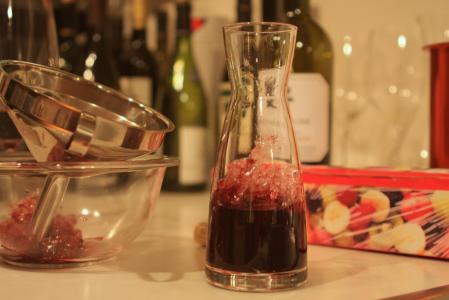Of all the things that can make wine taste funky, one of the most pernicious, and one of the hardest to deal with, is TCA.
Short for trichloroanisole, TCA is a strange little compound that is the result of a mold found in some cork crevices coming into contact with cleaning compounds and interacting with the cork phenols. The microbes that cause it can find their way into oak barrels or even a whole bottling line at a winery, meaning entire batches of a wine can be tainted. TCA makes a wine smell like mildewy, wet cardboard. It’s not harmful to your health, but it is definitely offensive to your taste buds.

Does your wine taste like this hoarder’s basement? Chances are it’s TCA. Photo credit: Hoarding Woes.
The good news is, less than 5% of wines produced these days have it, and if you opt for a bottle with a screw cap, you’re in the clear. The bad news is, there’s no way to tell which bottles have it until you open them up. So you might splurge on a fancy vino only to find that it’s a bit off. Most stores and restaurants will take such a bottle back no-questions-asked (or at least, will try it for themselves and side with you and then refund you).

Does your wine make you do this? There’s a simple fix!
But if there’s no way for you to return the wine, you have a simple solution that might just take some of the worst-offending odors out of that wine. Saran Wrap. That’s right, balling up a bit of plastic wrap and decanting your wine into a pitcher with it might just improve the aromas.
You need about a square foot of plastic wrap per bottle of wine. Simply pull off a bit of the wrap from the ream, wad it up and put it in an open pitcher. Then pour the wine into the pitcher, give it a good swirl and leave it for 5-10 minutes. Then taste a bit of the wine and see if there’s been any change. Repeat until you do detect one, and at that point, pour the wine in the pitcher into a decanter.

Saran Wrap is the simple and cheap solution, though it won’t be 100% effective. Photo source: SF Gate.
The reason this works is because plastic wraps contain polyethylene, which attracts the TCA compounds and sucks them out of the wine like a sponge. While many plastic wraps are made from low-density polyethylene, go for one that is primarily polyvinyl chloride, as this has been found to work better.
Now, before you get too excited, the plastic-wrap solution is not foolproof and it’s not 100% effective. At best, it helps alleviate the symptoms of cork taint, but does not cure them altogether. Your wine is still bound to have some off aromas. Not only that, but there might be other flaws as well.
Still, if you’re in a bind and don’t have any other wine on hand, it’s nice to have a simple solution in your back pocket, and one which you can use to impress your chemistry-minded co-drinkers.
Have you tried this trick yourself? Tweet me the results @clustercrush!

